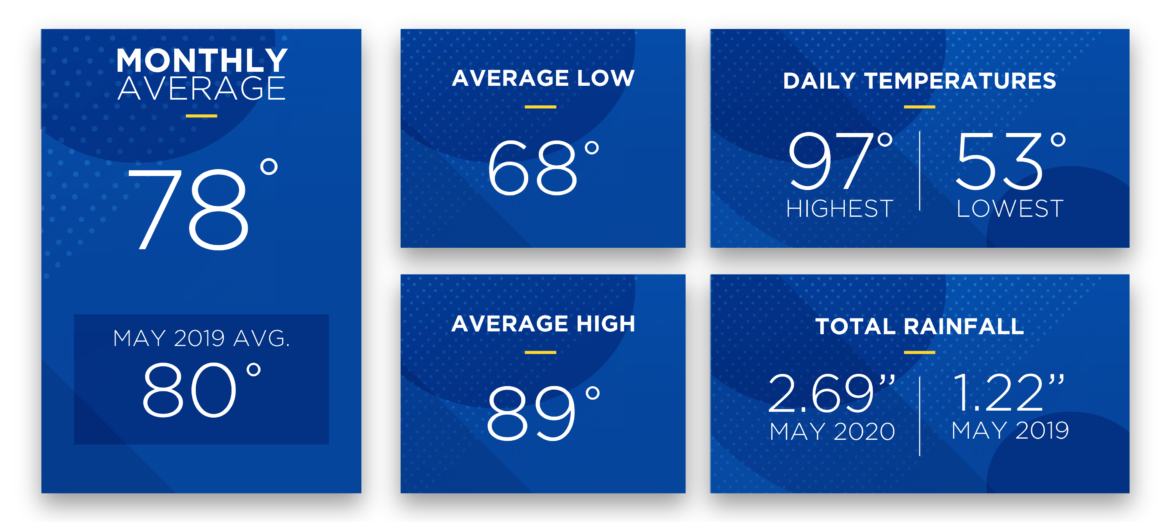Sunshine State Stats May 2020
Summer is almost here in Central Florida and we are feeling the heat. The average monthly temperature in May 2020 was 78.5 degrees only slightly lower than the average monthly temperature of 80.1 degrees in May 2019. The hottest day of the month was on May 22 when temperatures soared to 97 degrees. The lowest temperature recorded was 53 degrees on the evening of May 8.

May started seasonally with temps mostly in the mid to high 80s; however, in mid-May temperatures began to rise and the average high temperature for the month measured 89 degrees. Central Florida also received more rain near the end of the month with total precipitation at 2.69 inches compared to only 1.22 inches in 2019. Hopefully, your periwinkles are blooming!
On May 4, Governor DeSantis began Phase One of reopening many of Florida’s businesses with safety protocols in place. Thankfully, members started to return to work and leave their homes more often. With summer-like weather arriving early, you may want to schedule an HVAC technician to inspect your cooling system. Annual HVAC maintenance will extend the life of your unit and help you avoid large unexpected repair bills.
For cooling energy-efficiency, adjust your thermostat to between 78 and 80 degrees with the fan in the auto position. If you’re out and about for four hours or more bump your thermostat up a couple of degrees to save. For every degree the thermostat is set below 78 degrees cooling costs increase by 6 to 8 percent.
June 2020 forecast:
Rain is in the forecast for the beginning of June 2020, but temperatures are still predicted to be high. The average temperature for Central Florida for June in 2019 was 82.2 degrees with 5.96 total precipitation for the month. Be sure to use SPF when out in the Florida sun, it is a doozy.
Atlantic hurricane season began on June 1. Forecasters predict an above average hurricane and tropical storm activity this year. SECO Energy is StormReady and offers resources to help you and your family prepare for hurricanes and tropical storms that affect our area. Read our Hurricane Handbook for information before, during and after a storm online.
To check historical usage, log in to SmartHub to view past bills and consumption charts. If your usage is high, SECO offers several energy-efficiency tools to help you identify energy wasters. Take the Home Energy Assessment to receive a detailed email tailored to your home’s features and lifestyle. The energy-saving advice will provide low-cost ways to decrease your usage – and your electric bill.
To easily calculate how much energy your appliances, lighting, electronic devices, and other energy-using items in your home consume, use the Energy Estimator.






